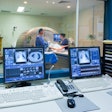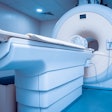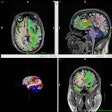The ancient Chinese practice of acupuncture shows promise for treating symptoms of postconcussion syndrome (PCS), researchers have reported.
In fact, in a small study, a group led by Zhuo-Nan Wang, PhD, of Xi'an Jiaotong University in China, found that acupuncture reduced PCS symptom severity by 34% immediately after the intervention and 41% after six- to 12-month follow-up compared with placebo and control groups. The results were published July 22 in Radiology.
"Our study provides valuable evidence of the efficacy of … acupuncture in treating postconcussion syndrome in participants with mild traumatic brain injury (mTBI), highlighting the potential of acupuncture to both improve symptoms and ameliorate microstructural changes," the team wrote.
Mild traumatic brain injury, or mTBI, makes up 80% to 90% of all traumatic brain injury cases, and 24% to 84% of patients with mTBI progress to chronic PCS. But the varied manifestation of PCS can make it difficult for clinicians to determine the best treatment, the investigators noted. Current PCS management options include analgesics, antidepressants, nutraceuticals, and physical therapy, but "these approaches are often ineffective and carry the risk of adverse effects," they explained.
"With increasing interest in nonpharmacologic alternatives, acupuncture has emerged as a potential option for its low adverse effect profile," the group wrote. "Acupuncture may alleviate several PCS symptoms, such as anxiety, pain, and sleep disturbances, by modulating neurotransmitters, promoting nerve repair, increasing cerebral blood flow, and reducing neuronal apoptosis."
Acupuncture is an ancient technique that uses thin, stainless-steel needles to stimulate specific points on the body and thus promote healing and mitigate pain, Wang and colleagues wrote. They hypothesized that the practice could prove an effective treatment option for PCS and conducted a study that explored its use for managing acute PCS symptoms and long-term neurologic damage.
The work included 66 patients with mTBI diagnosed between August 2016 and September 2020. Study participants were assigned to one of three groups: an acupuncture cohort (n = 22), a placebo cohort (n = 22), and a waiting-list cohort (n = 22). Patients underwent actual and placebo acupuncture in 14 sessions over four weeks; the placebo acupuncture was performed using needles that have a similar mechanism to stage daggers (i.e., the shaft of the needle retracts into the base).
The team assessed each individual's PCS symptoms at baseline, after the acupuncture intervention, and at six- to 12-month follow-up. Patients were scanned with MRI at baseline and after the intervention, and the waiting list controls were also scanned twice with MRI in this manner. Wang's group assessed any correlations between imaging findings and PCS scores (with higher scores equal to more impairment).
The investigators found that the PCS score was reduced in the acupuncture group (p = 0.002) but not in the placebo acupuncture or waiting-list control groups (p = 0.05 for both). They also reported the following:
- At six- to 12-month follow-up, PCS symptoms were stable in the acupuncture group (p < 0.001).
- Compared with the waiting-list control group, all participants with mTBI had decreased fractional anisotropy in the right cerebral peduncle, anterior limb of the internal capsule, posterior corona radiata, and cingulum-hippocampus at six- to 12-month follow-up. "Fractional anisotropy is a key measure of brain atrophy derived from diffusion-tensor imaging (DTI) and is widely used to assess axonal injury," the team noted.
- Greater improvements in the fractional anisotropy of the right posterior corona radiata after acupuncture were linked with persistent therapeutic effects of acupuncture at six- to 12-month follow-up.
 Axial (top) and sagittal (bottom) diffusion-tensor imaging scans and bar graphs show fractional anisotropy (FA) values of white matter fibers after verum acupuncture. * = p < 0.001, Bonferroni-corrected for multiple comparisons. Error bars represent SDs. R = right hemisphere.RSNA
Axial (top) and sagittal (bottom) diffusion-tensor imaging scans and bar graphs show fractional anisotropy (FA) values of white matter fibers after verum acupuncture. * = p < 0.001, Bonferroni-corrected for multiple comparisons. Error bars represent SDs. R = right hemisphere.RSNA
The research suggests that acupuncture could be a "game-changer" for treating mTBI, according to an accompanying commentary.
"This study reports positive outcome following acupuncture treatment in mTBI and should provide a strong rationale for future large multicenter clinical trials," wrote Ponnada Aswadha Narayana, PhD, professor emeritus in the Department of Diagnostic and Interventional Imaging at McGovern Medical School, University of Texas Health Science Center at Houston. "If successful, this could be a game-changer in treating mTBI."
The complete study can be found here.



.fFmgij6Hin.png?auto=compress%2Cformat&fit=crop&h=100&q=70&w=100)


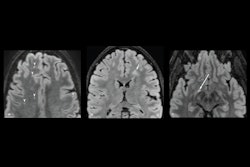
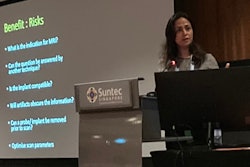
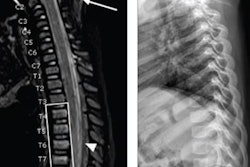
.fFmgij6Hin.png?auto=compress%2Cformat&fit=crop&h=167&q=70&w=250)




